
Audi announced that it is testing a new bi-directional charging system for its electric vehicles with the goal to use them to store solar energy.
Bi-directional charging, also known as Vehicle-to-Home (V2H) or Vehicle-to-Grid (V2G), has a great potential to create more value for electric vehicles through energy services.
However, not many automakers are actively pursuing the technology at the moment.
Nissan is one of the only few major automakers openly pursuing the technology, but Audi is now adding itself to the list.
This week, Audi announced a new partnership with the Hager Group to test a new bi-directional charging system:
“Increasing network stability, lowering electricity costs, and contributing to climate protection – that is the vision that Audi and the Hager Group are pursuing. The incorporation of the electric car into the domestic grid is at the core of an innovative research project on bidirectional charging. This offers major advantages in combination with a photovoltaic system in particular. Excess PV electricity can be stored temporarily and output as needed.“
Their research not only involves the actual technology required to enable bi-directional charging, but also the creation of the right incentive system to make it viable – especially for EV owners who have solar power at home.
Audi wrote about the project in a new press release:
“Bidirectional charging focuses mainly on use cases where home owners use their own photovoltaic system to benefit from cost-optimized charging with their domestically generated electricity. The electric car stores the excess electricity from the PV system that is not used by appliances in the house. If the customer has variable rates, the electric car can supply the entire house in phases where electricity prices are high. At night or during non-productive times of the rate, the car then uses inexpensive electricity to charge up to the desired target SOC (state of charge). Bidirectional charging also provides a security of supply that extends beyond pure cost optimization: In the event of a blackout, the system can supply the house with energy via the high-performance HV battery or it can even operate a building without a grid connection independently in what is known as stand-alone operation.”
For the current test program, Audi is using an e-tron with a “near-series” charging system.
The German automaker claims that they are able to charge the electric DC to DC system with solar:
“An Audi e-tron with near-series charging technology was used in the research project. In the test grid, the fully electric Audi model operated with a DC wall box, which enables a charging capacity of up to 12 kW, and a flexibly extendable home storage unit with a capacity of 9 kWh. While it could provide additional flexibility in possible series production, it is not a necessary requirement for bidirectional charging. Thanks to the DC voltage level in the overall grid, the connection between the PV system and the vehicle does not require an inverter and is thus a particularly efficient solution.”
Here are a few pictures of the test program released by Audi today:
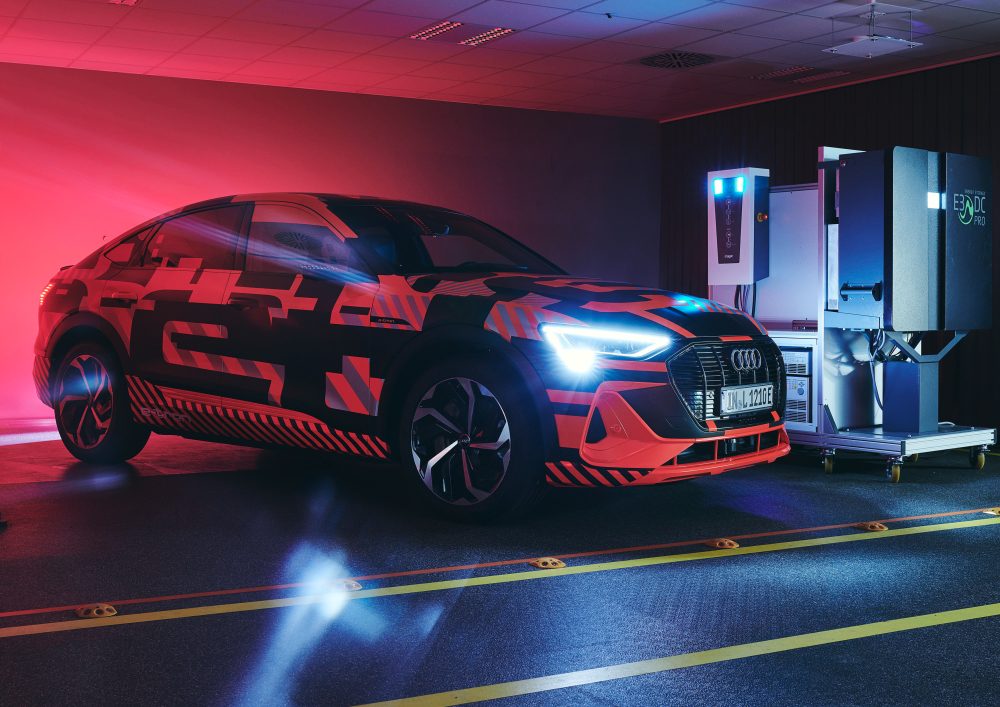
Audi is researching bidirectional charging technology 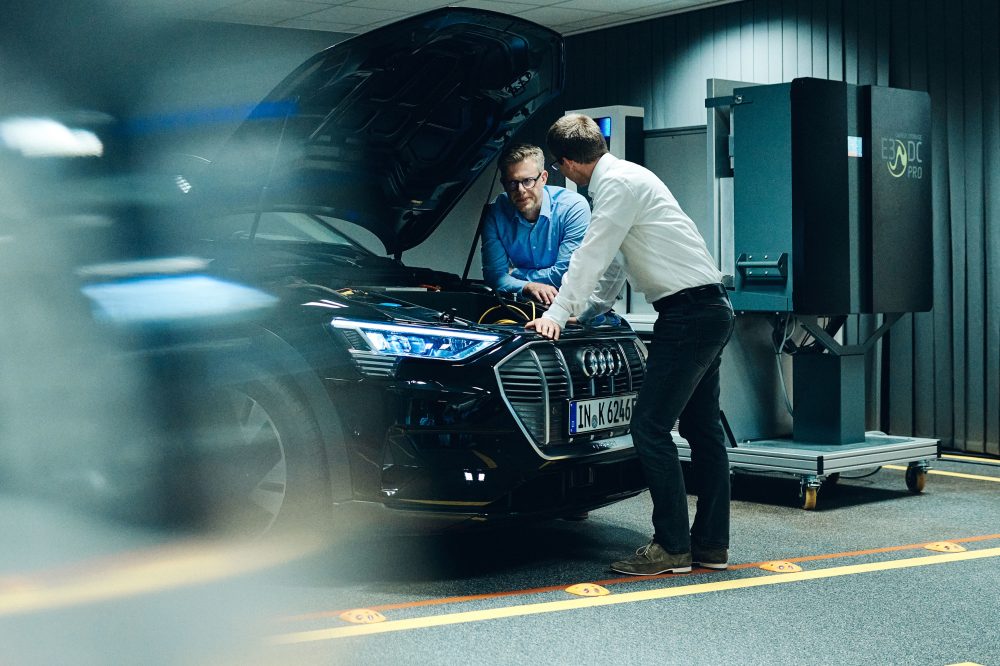
Audi is researching bidirectional charging technology 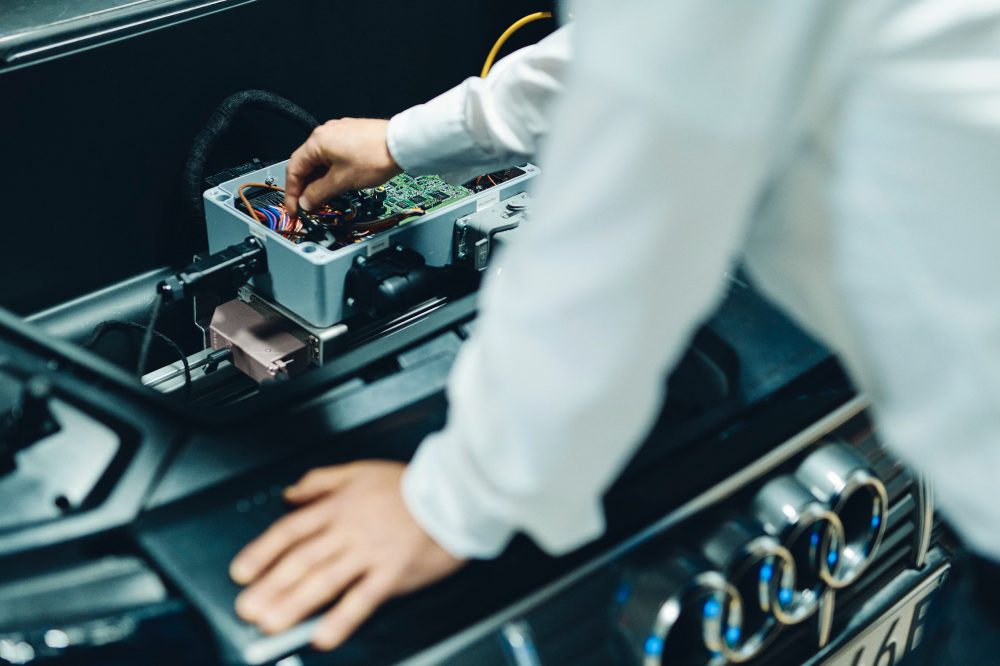
Audi is researching bidirectional charging technology 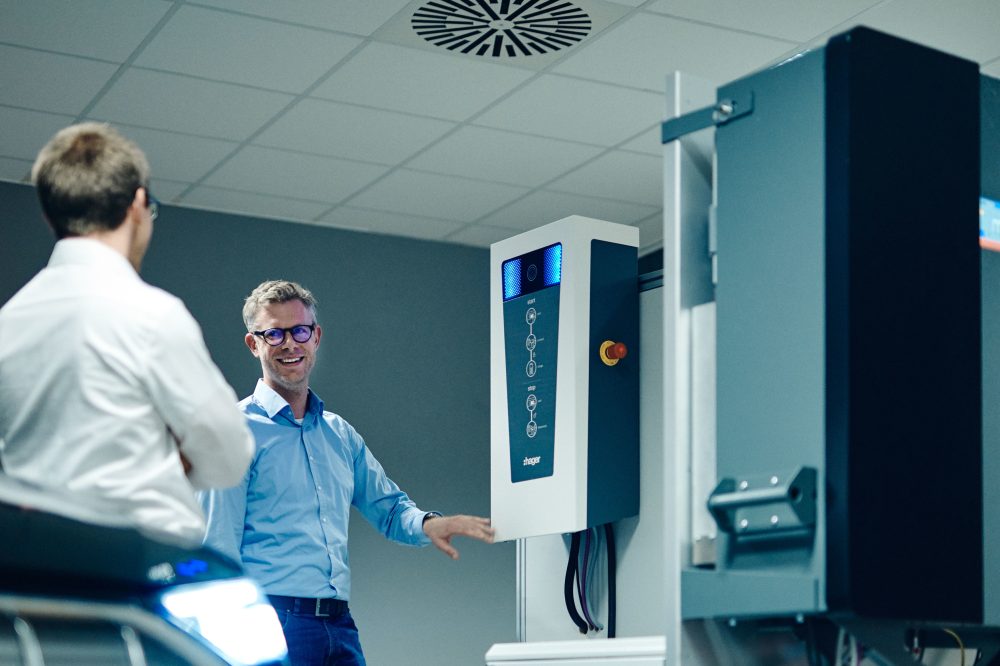
Audi is researching bidirectional charging technology 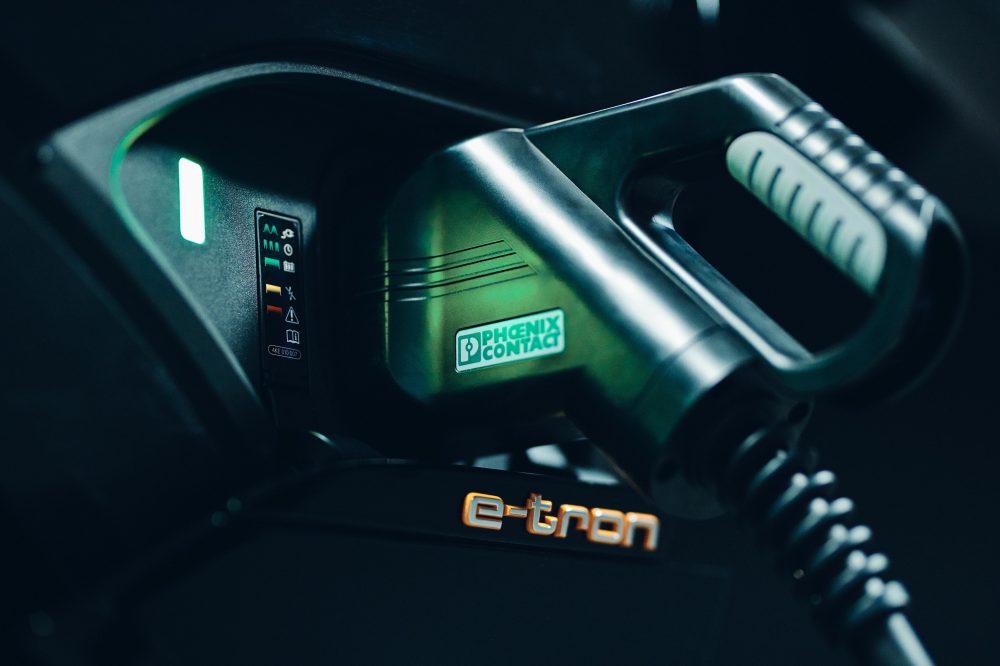
Audi is researching bidirectional charging technology 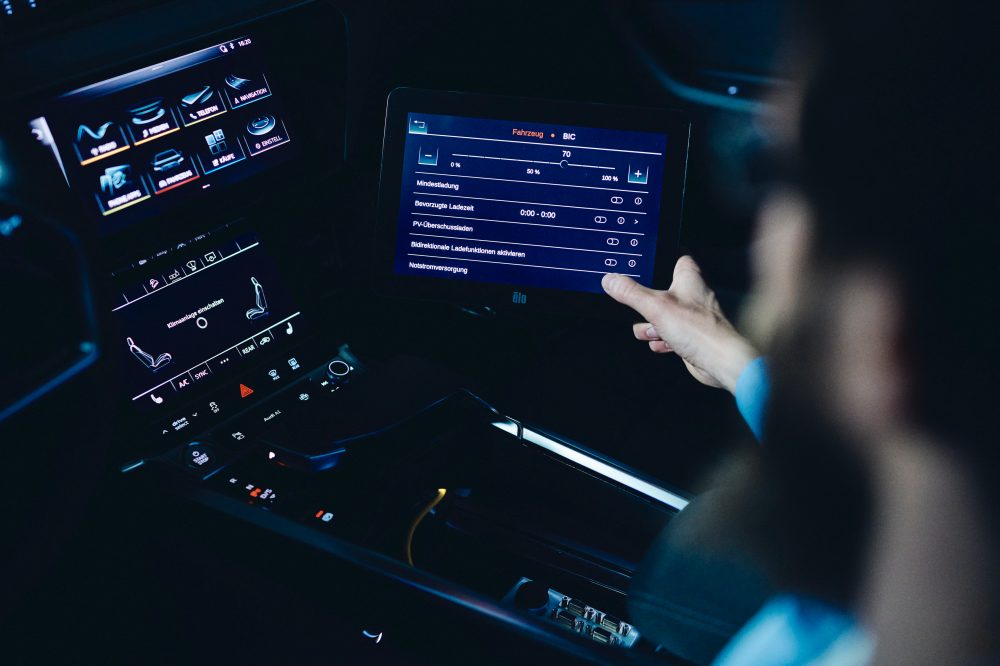
Audi is researching bidirectional charging technology
Martin Dehm, technical project manager for bidirectional charging at Audi, said that they are aiming to have a system that is usable daily:
“Maintaining mobility is at the center of our attention. Customers therefore don’t need to restrict themselves in order to make bidirectional charging suitable for everyday use. The intelligent charging management manages the optimum use of the battery, thereby maximizing the cost-effectiveness of the overall system. The system is very easy for customers to use – all they have to do is plug in the car, and the rest happens automatically.”
Audi didn’t offer any timeline on a potential commercialization of the product.
Electrek’s Take
One of the biggest issues with the ramp-up of bidirectional charging products is that automakers are afraid that regular use of their EVs as energy storage systems instead of transportation would accelerate battery degradation.
Therefore, they need to balance the value of such a system with the affect on the vehicles.
Ironically, Audi, who is one of the automakers most conservative when it comes to battery capacity with its e-tron vehicles featuring some of the biggest battery energy buffers in the industry, is now pursuing the technology.
What do you think? Let us know in the comment section below.
FTC: We use income earning auto affiliate links. More.




Comments